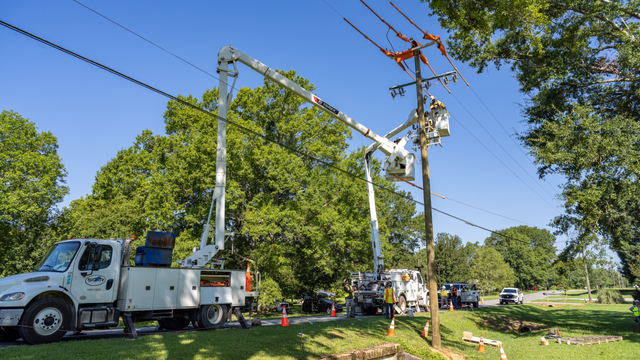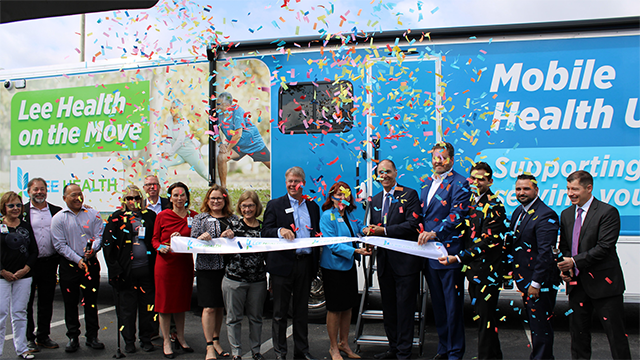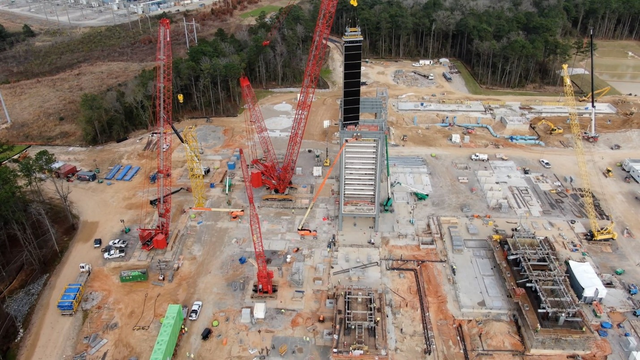To further the development of tidal energy as a commercially viable source of renewable power, lessons learnt from MeyGen Phase 1A are being shared in a new assessment authored by Black & Veatch’s marine energy team. This article shares some of the findings of overall significance to the maturation of tidal energy.
The 6-megawatt (MW) demonstration array, comprised of four 1.5MW tidal turbines, entered its 25-year operations phase in April 2018. To-date the array, in Scotland’s Pentland Firth, has successfully exported 21 gigawatt hours to the grid, with an average turbine availability of circa 95 percent during its operational phase. MeyGen Phase 1A was partly funded through a £10 million grant from the Department for Business Energy and Industrial Strategy (BEIS).
This article shares some of the findings of overall significance to the near-term development of tidal energy, with a particular focus on how the technology has matured. The full learning is presented in the Black & Veatch authored report
Leasing and consenting
The level of detail required to meet offshore site leasing conditions, particularly in the early stages of the project, was relatively undefined. For example, differences between moorings and foundations were not clearly defined, and the scope and depth required of any third party (design) review was also unclear. It would be useful to the industry if the requirements could be standardised, wherever possible, and the generic requirements communicated through online publications and conferences to the wider industry.
General contracting
Whilst MeyGen aimed to have two to three main contracts, in the event nine contracts were required to arrive at a contract structure that was economically viable and allowed the project to reach financial close. The main contracts were; turbine supply (from two suppliers), offshore installation, onshore infrastructure works (including power converters), turbine foundation (separate for design and fabrication), foundation ballast supply, Horizontal Directional Drill and cable supply. The use of nine contracts was a significant compromise and meant MeyGen had to devote considerably more resource to managing contractual interfaces, which were the primary source of contract claims. It is still judged sensible to keep the number of contracts to a minimum. As the technology and its risks become better understood by the supply chain, it is hoped that there will be more opportunities to reduce the number of contracts and wrap the risks appropriately into each.
Budget
The MeyGen Phase 1A project deployed a single Atlantis turbine and three Andritz turbines. This low volume of turbine production is not sufficient to drive unit cost reductions. Much larger volumes, associated with later MeyGen project stages (e.g. Phase 1C), are still expected to bring significant economies of scale when dedicated production facilities and tooling can be justified.
Programme
With typical contracting structures, marine contractors are likely to have a more conservative perspective of the programme (and hence costs) than the client. MeyGen’s view is that it is better to have a programme which seeks to maximise installation opportunities (whilst acknowledging that this programme may not be achieved due to operational events) rather than work to a more conservative (baseline) programme. To achieve this approach, it is important to agree a contractual mechanism that gives both parties a sufficient ‘gain’ (for bettering the programme) to offset any ‘pain’ (which the contractor may experience for not meeting the programme).
Certification
MeyGen recognises that certification by a Certification Body could add value for later stages of MeyGen Phase 1, when the benefits to such larger projects could offset the costs. A certification process would generally include the following:
- Design assessments and approvals;
- Manufacture surveillance;
- Installation (including transportation) surveillance;
- Commissioning surveillance;
- Agreement on the strategy for operational surveillance and maintenance of the certificate.
Cable design
MeyGen sought a wide range of advice on cable design and installation before deciding on their final solution. Modelling and tank testing were used to help raise confidence in the cable design. However, MeyGen did not find a modelling or testing methodology that could deal with the cable in the region close to the seabed in sufficient detail or with sufficient confidence. Testing and modelling were not able to prove that the cable would be stable on a fractured rock seabed under the action of tidal and wave loading. Given this, MeyGen installed heavily armored subsea cable and positioned rock bags in areas of frequent cable movement and then introduced a frequent inspection/monitoring regime to conform cable stability. This approach allowed for significant cost savings to be made. The installation contractor complimented MeyGen on their overall approach of ‘install and monitor’ rather than (for example) the overly extensive use of rock bags (or other ballasting means). It is noteworthy that the monitoring work has indicated sliding of the cables and some wearing on the surrounding rock but no damage to the cables.
Vessel charter
One of the most impactful lessons learnt by MeyGen from a cost perspective is that dynamic positioning (DP) vessels do not normally work in currents stronger than six knots. In stronger currents, the vessel’s navigational system would introduce an offset to the target position that had to be manually adjusted and changed with flow speed. Once identified this offset was monitored by the DP Operator to allow works to continue.
Turbine support structure (TSS) installation
MeyGen Phase 1A uses gravity foundations which have three feet that each require a suitably level seabed. MeyGen has found it challenging to find locations that satisfy the foundation requirements for all the feet of all the foundations. In particular:
- Given this difficulty, MeyGen found that an earlier more detailed study of the seabed conditions, including bathymetric and visual inspection, would have been valuable;
- Greater allowance for micro-siting the foundations should have been made, thus enabling a better positioning of the cables;
- MeyGen should have given a higher weighting to this issue when deciding between the use of gravity base or monopile foundations in the early engineering stages;
- The seabed at some of the individual foundation sites needed to be consolidated due to the presence of large boulders;
- MeyGen prioritised the standardisation of the foundation design over flexibility to suit the different seabed conditions, and would have benefitted from a more flexible foundation design;
- Seabed compaction due to the placement of the gravity base foundations is an important design driver and is difficult to determine before full installation.
Through the application of detailed engineering and planning (as well as site-specific sea trials), the safe use of a large Jack-Up Vessel (JUV) at a high velocity tidal site such as MeyGen was proven to be possible (this approach had previously been questioned within the industry for a number of years). This allowed the TSS to be installed within +/-2.5 degrees tolerance on verticality and +/-5 degrees on heading. MeyGen’s view is that for installation of large structures such as the TSS a JUV can be cost effective; however, MeyGen would still expect to use a DP vessel for turbine and cable installation.
Onshore works
The interface between the turbine supplier and the onshore works contractor, specifically relating to the onshore converters, proved complex. Although converters with extensive previous use for wind turbines were utilised, application specific modelling and engineering work was needed to optimise the converter performance for tidal turbines. In the long term, there could be benefit from integrating the converter supply with the turbine supply contract.
Hardware
One of the turbine types required backup power in the event of a power cut. The backup power was required to allow the user to continue to monitor the turbine, to ensure it remains at the required temperature, and to prevent the need for manual re-calibration of the pitch controllers. This requirement for backup power resulted in a number of associated issues. Firstly, it meant that a battery pack was required during ship transit. The battery pack required an earth connection which is not available on a vessel. As a result, the batteries were damaged, and this was not discovered until after deployment which resulted in a de-installation and re-installation being performed. Secondly, this type of turbine requires an onshore stand-by generator for use in the case of grid loss. The changeover between grid and stand-by generator and back to grid takes a substantial amount of time, resulting in a total of circa. 3 days downtime per year. Automating this process would increase availability but MeyGen would recommend that a simpler solution would be to specify that the turbine technology should not require backup power.
Performance
MeyGen attempted to conduct the power performance assessment according to the International Electrotechnical Commission Technical Specification (IEC TS) on Tidal Power Performance Assessment (IEC TS-62600-200), but in practice found that the required bed-slope conditions for acoustic doppler current profiler ADCP placement could only be met on one side of each turbine. This, in conjunction with the excessive costs of deploying two bed-mounted ADCPs per turbine(i.e. 8 in total) led to the decision to place only a single acoustic (Doppler current profiler) ADCP on either the incident flood or ebb side of the turbine (whichever met the required seabed slope conditions). It is noteworthy that one of the ADCPs shifted during the survey, rendering the data unusable. The onboard nacelle and hub mounted ADCPs of one of the turbines was then used to develop a nacelle-to-hub ADCP relationship to arrive at hub-height velocities for the opposing flows and/or other turbines using their respective onboard nacelle ADCPs. This approach was not previously verified, but MeyGen concluded that the nacelle-to-hub shear exponent approach in this instance appeared to produce reasonable estimates of hub-height velocity from the nacelle-mounted ADCP when directly compared to bed-mounted ADCP data (where this was available). MeyGen concluded that using only a single ADCP on either the incident flood or ebb side of the turbine for a power performance assessment is difficult, but worked in this instance, due to the onboard ADCPs. Going forward, MeyGen is considering still using only a single ADCP per turbine for future power performance assessments. This would be placed perpendicular to the main flow direction in line with the turbine, to allow it to measure both the ebb and flood flows, albeit slightly offset spatially. MeyGen is in communication with the IEC TS-62600-200 Maintenance Team to feedback on their usage of the technical specification.
To read the report’s key findings, click here to download the Executive Summary. The full lessons learnt throughout the design, construction and initial operations phases of MeyGen Phase 1A are available here.





